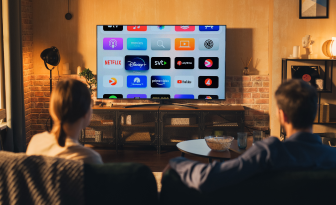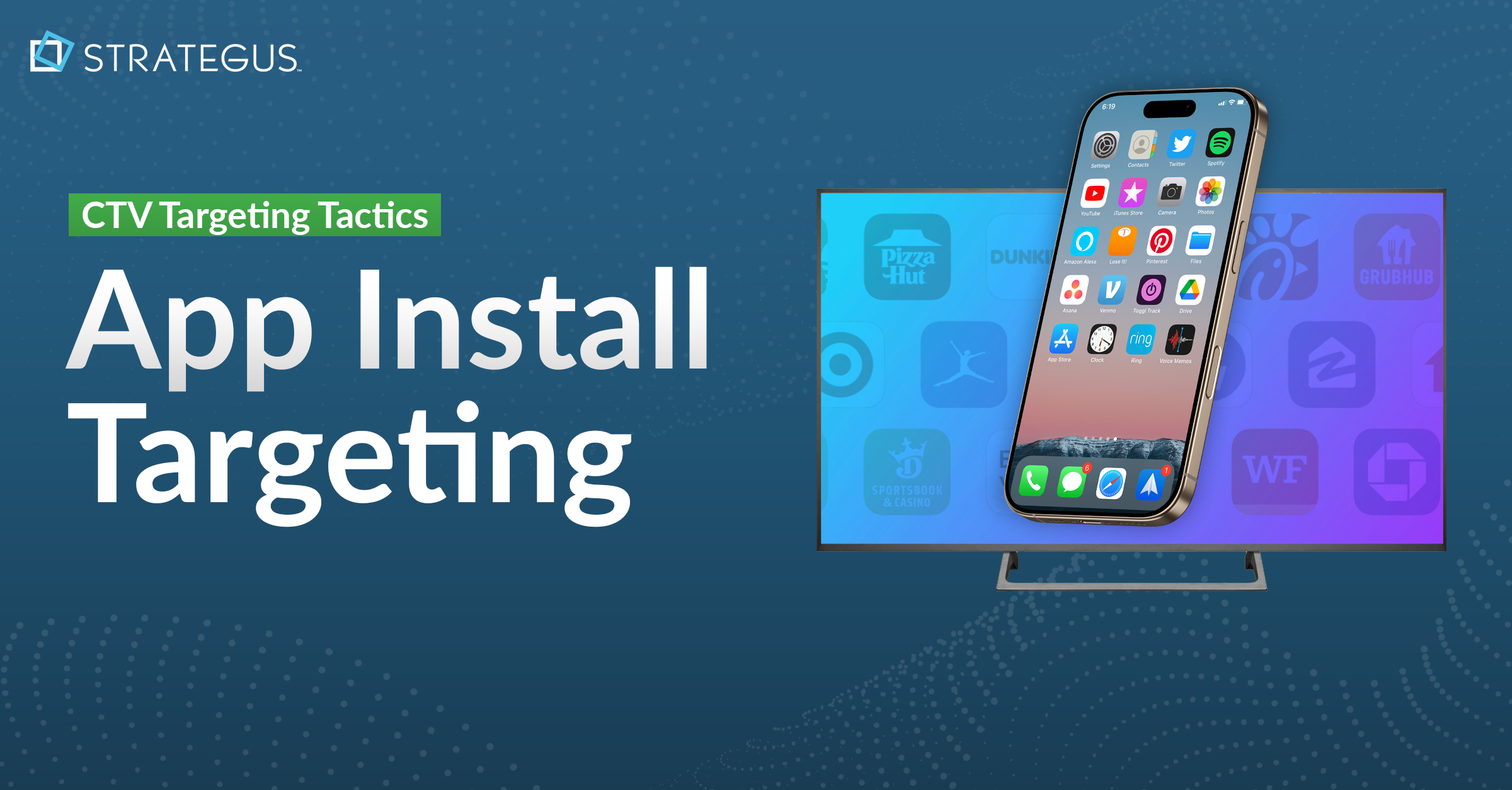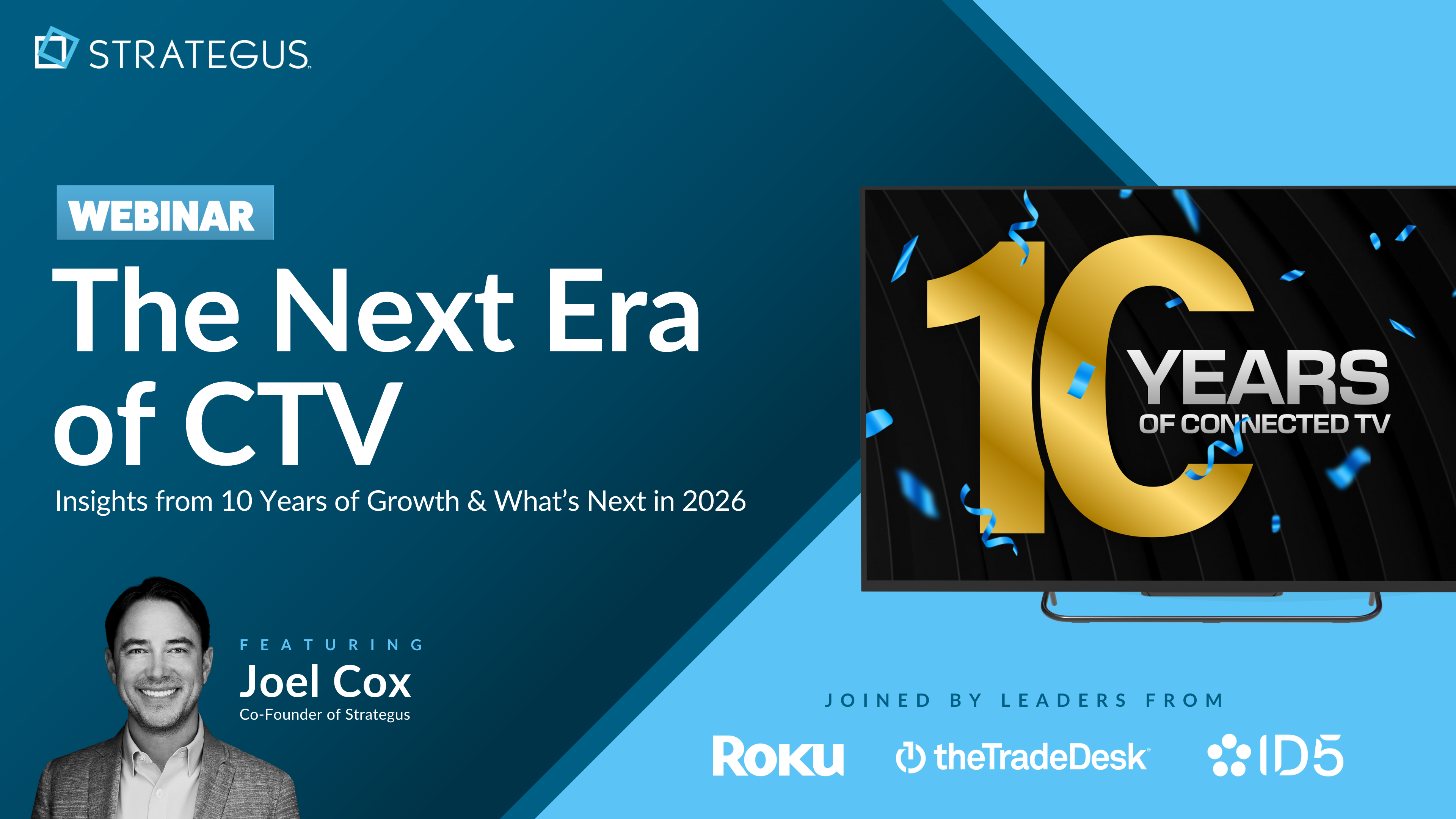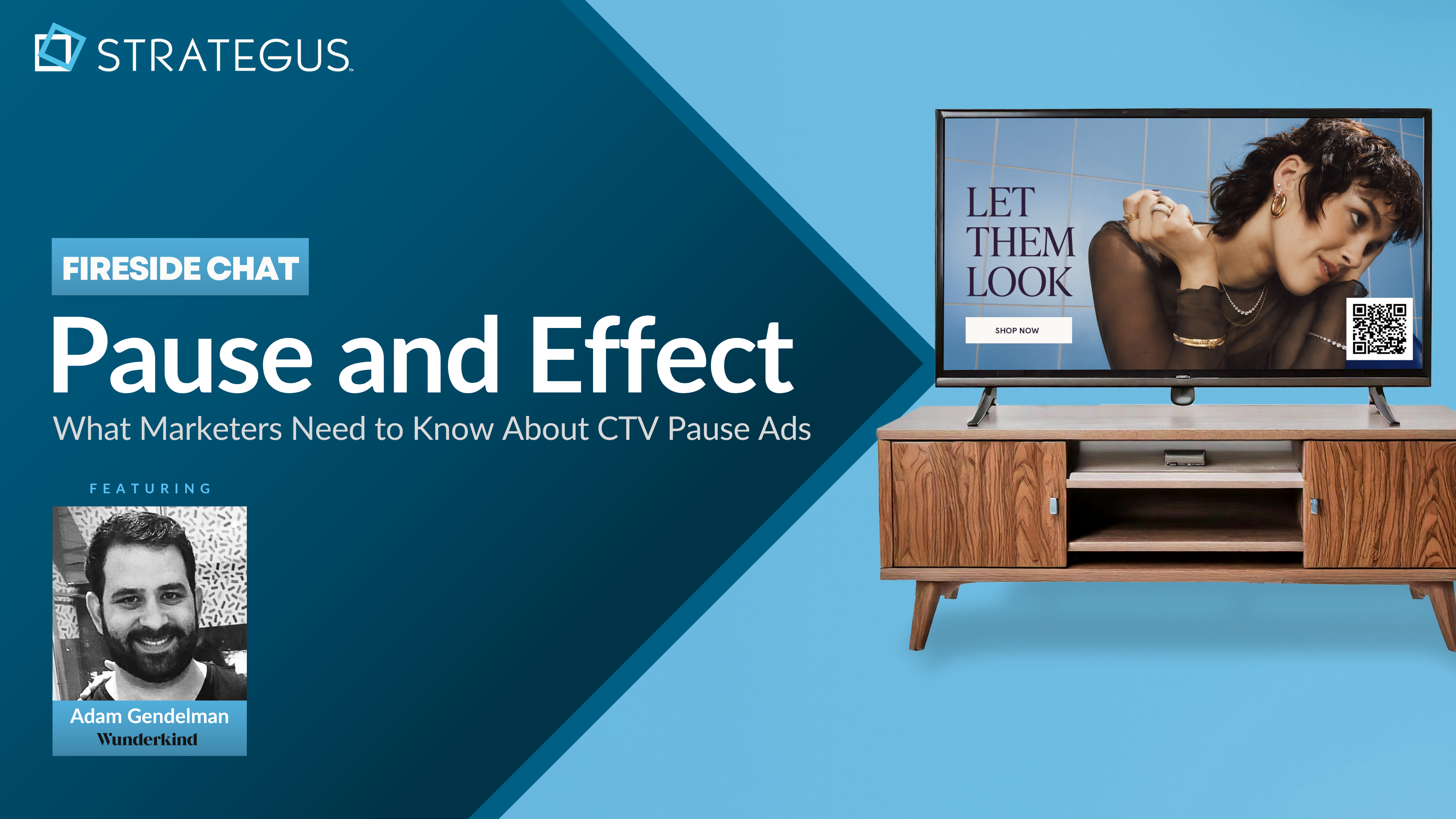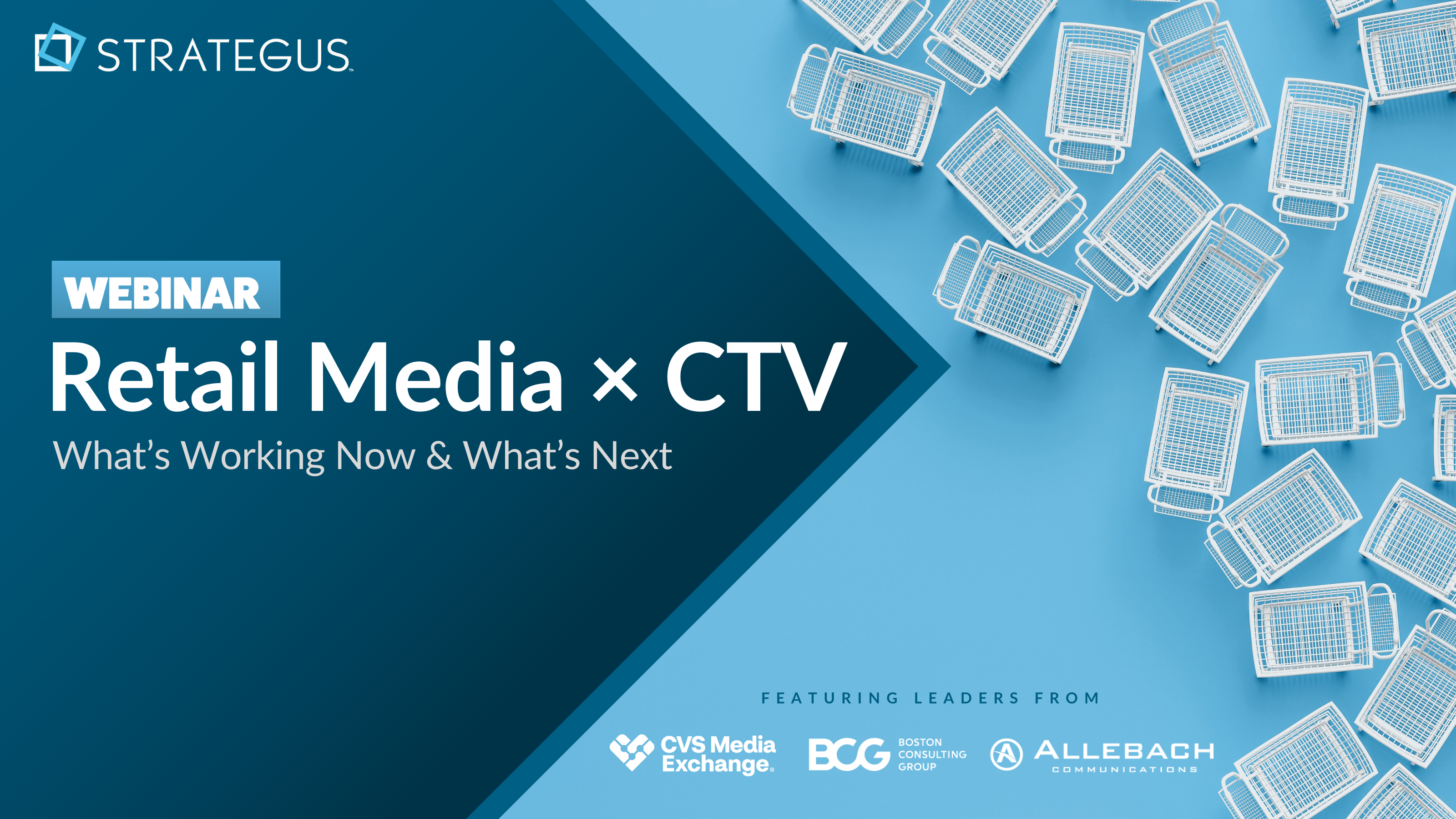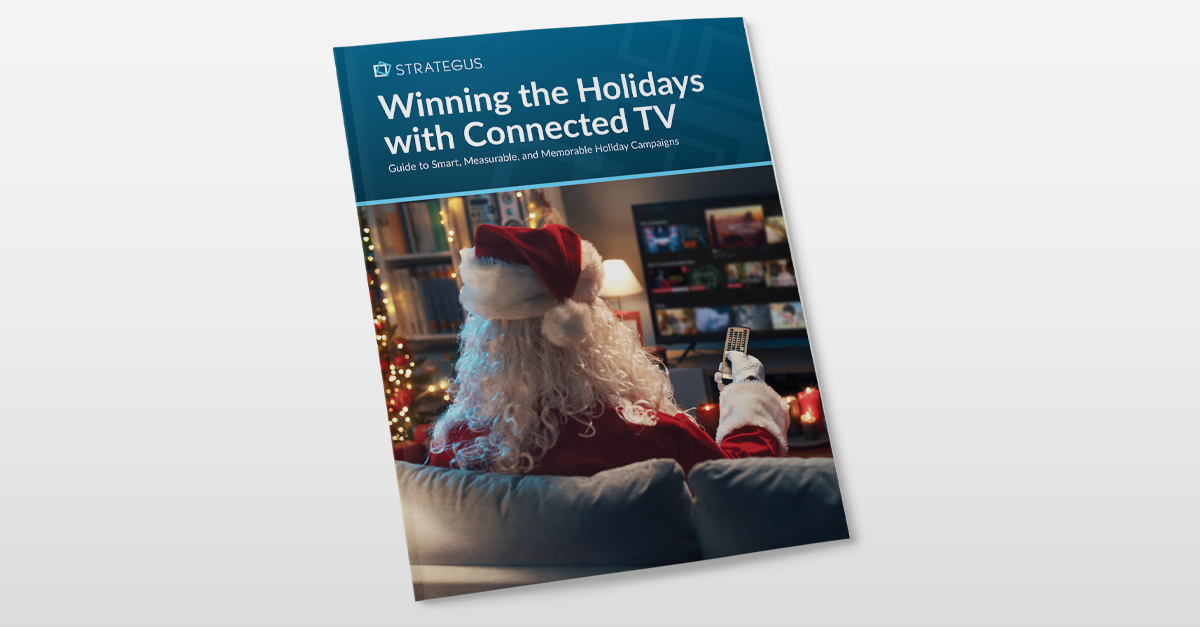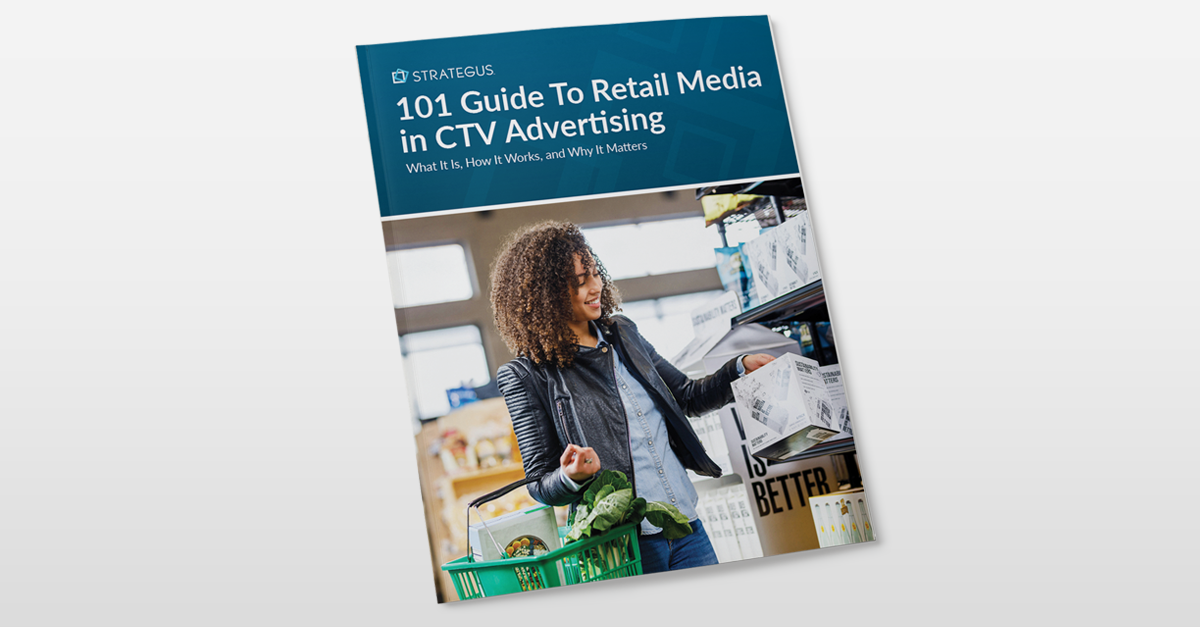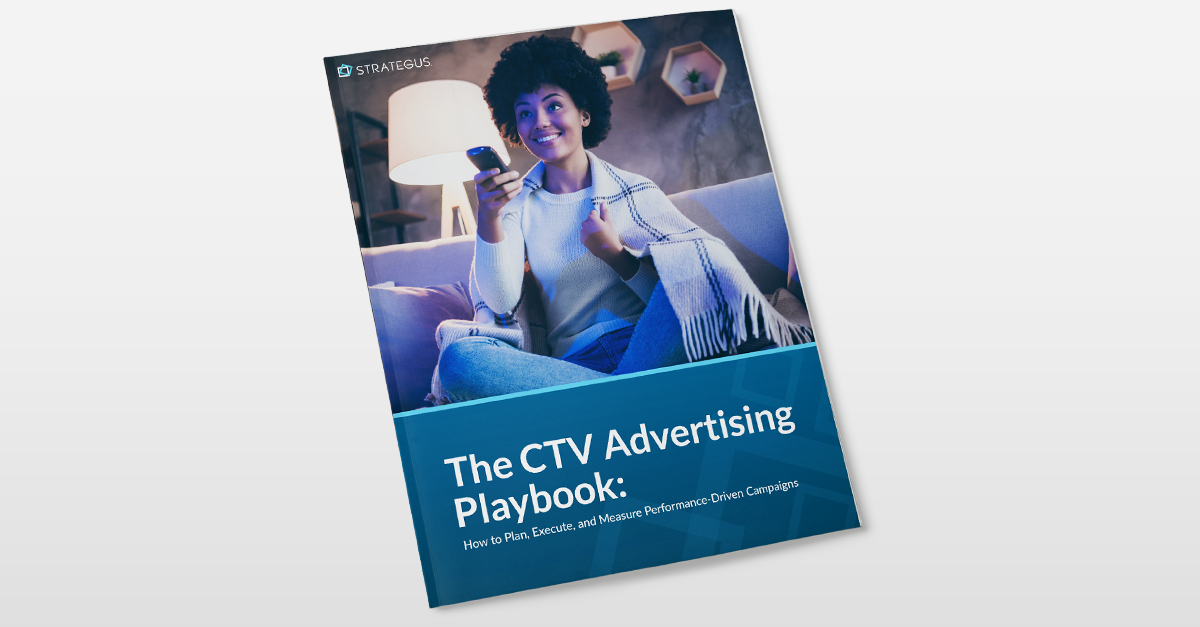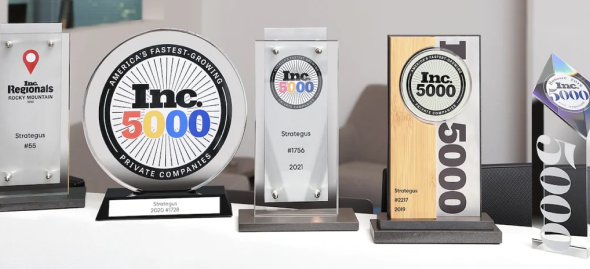- Home
- Strategus Blog
- What Is TV Media Buying & How Does It Work?
What Is TV Media Buying & How Does It Work?
8 minutes read
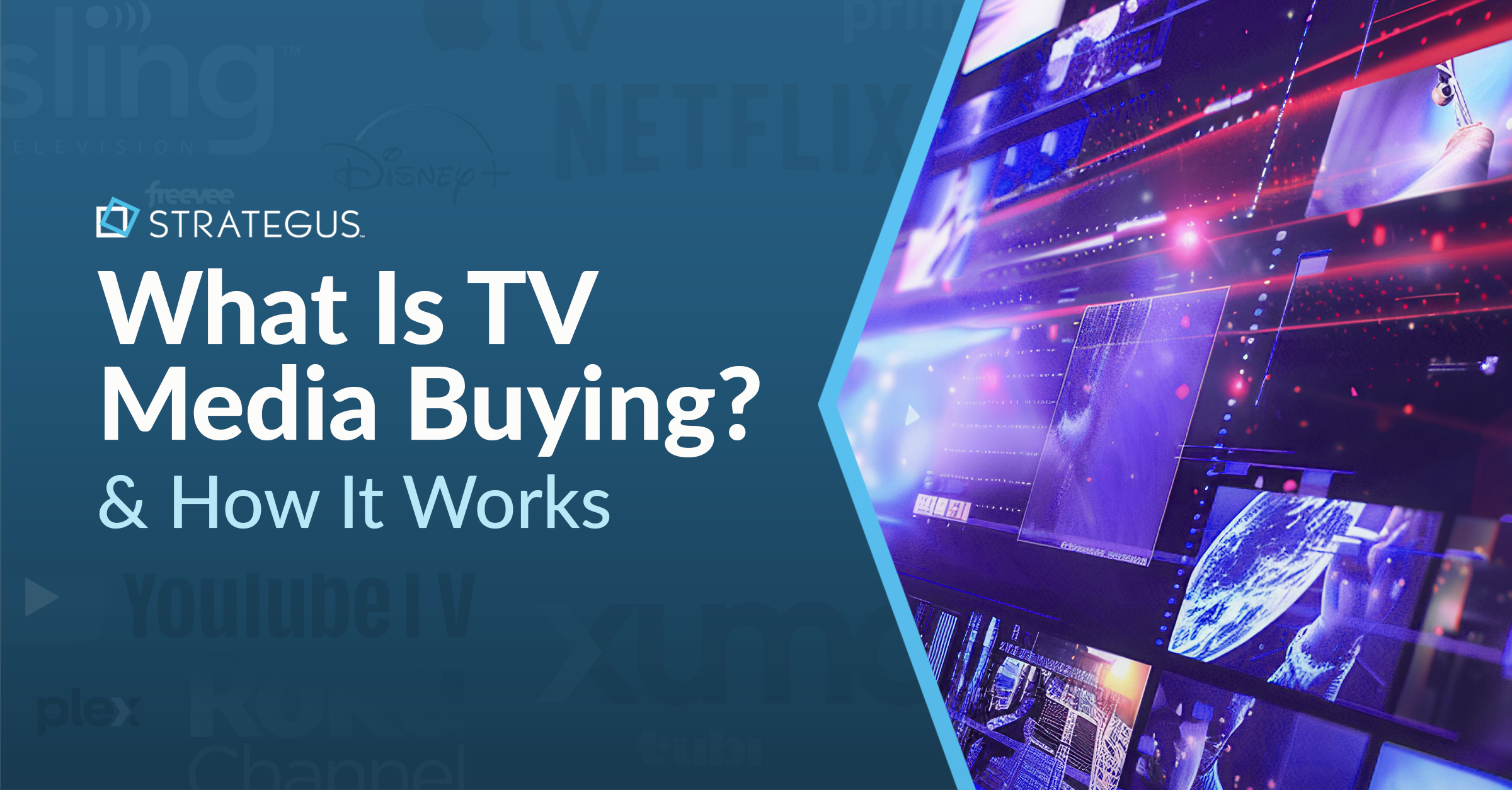
TV advertising used to be simple. You picked your shows, bought your spots, and waited for the phone to ring. But somewhere between the rise of Netflix and your neighbor's ability to pause live sports, that playbook became about as useful as a VHS rewinder.
The TV advertising industry right now looks nothing like the one media buyers got used to even five years ago. Viewers bounce between broadcast networks, streaming services, and YouTube without giving it a second thought. They watch on smart TVs, tablets, phones; sometimes all three during a single show. And they expect ads that actually relate to their interests, not just whatever demographic bucket Nielsen decided they fit into.
The complexity can be paralyzing. Media buyers now juggle programmatic platforms, direct publisher deals, private marketplaces, and traditional upfronts; often for the same campaign. Terms like "addressable TV" and "cross-device attribution" get thrown around conference rooms like everyone's supposed to know what they mean. Meanwhile, CMOs are asking tough questions about ROI that "gross rating points" can't answer anymore.
But here's what hasn't changed: great TV advertising still works. In fact, it works better than ever when you know how to work your way through this new ecosystem. The same emotional power that made TV the king of advertising for decades is still there; now it just comes with targeting capabilities that would make those old-school media planners weep with joy.
This article drops all the complexity around this topic to show you how modern TV media buying actually works. No jargon-heavy lectures or platform pitches; just practical insights on how to reach viewers wherever they're watching, measure what matters, and make your budget work harder than ever.
Key Takeaways
- TV media buying has evolved from fixed time slots to data-driven, cross-device targeting across linear, CTV, and streaming platforms.
- Traditional TV buys are slow and broad, while modern CTV buying is fast, precise, and optimized in real-time through programmatic bidding.
- Advertisers now access inventory via direct deals, private marketplaces, and open exchanges, each offering unique advantages in cost and control.
- Media buying services offer better rates, advanced tech stacks, and faster campaign pivots, turning ad complexity into a strategic advantage.
- Expert media buyers bring cross-platform insight, premium inventory access, and real-time optimization capabilities most in-house teams can’t match.
- Strategus empowers brands with fully managed CTV and OTT campaigns, unlocking smarter targeting, attribution, and performance at scale. Talk to a Strategus expert to learn more today.
What Is TV Media Buying?
TV media buying is the process of purchasing advertising space on television to reach target audiences. It involves selecting channels and programs, negotiating rates, scheduling placements, and measuring campaign effectiveness. The goal remains constant: connect with the right viewers at the optimal time for the best possible return.
Traditional TV buying relies on broad demographic targeting and specific time slots. Buyers purchase inventory on networks like ABC or cable channels like ESPN based on general audience composition. They hope their target customers are among the millions watching.
Modern TV buying leverages data and technology for precision targeting. Instead of buying a time slot, you buy access to specific households based on their viewing habits and online behavior. Connected TV (CTV) platforms enable this household-level targeting while maintaining television's emotional impact.
The fundamental shift changes everything. You no longer waste budget reaching viewers outside your target market. Every impression counts because it reaches someone who matches your ideal customer profile. This efficiency transforms TV from a broad awareness play to a performance marketing channel.
How Does Media Buying Work?
The mechanics of TV media buying vary dramatically between traditional and modern approaches. As potential advertisers, you’re going to have to understand both to explain why so many advertisers are shifting budgets to CTV.
Traditional TV Media Buying Process
Traditional TV buying follows a months-long cycle that hasn't changed much since the 1960s. The process starts with the upfronts each spring. Networks parade their fall lineups while agencies commit billions in advertising dollars based on projected ratings.
Media planners study Nielsen data to identify programs reaching their target demographics. They develop proposals outlining recommended buys across different networks and dayparts. Negotiations with network sales teams can stretch for weeks as both sides haggle over rates and added value.
Once terms are agreed, buyers create insertion orders detailing every placement. Creative assets must meet exact specifications and arrive days before air dates. After campaigns run, buyers wait weeks for performance reports based on panel data from a few thousand households.
The scatter market offers an alternative for advertisers who miss the upfronts or need flexibility. These last-minute buys typically cost more but avoid long-term commitments. Either way, the process moves at human speed with limited optimization opportunities.
Modern CTV/Programmatic Process
Programmatic TV buying operates at digital speed. The entire process from viewer identification to ad delivery happens in under 100 milliseconds. Here's how it works:
A viewer fires up Hulu to watch their favorite show. The moment they hit play, Hulu's system recognizes an ad opportunity and sends a bid request to ad exchanges. This request includes anonymized information about the household's viewing patterns and demographics.
A demand-side platform takes a look at this opportunity in real-time. Does this household match your target audience? Have they visited your website recently? Are they in your target geography? If the answer is yes, a bid is calculated based on the likelihood of conversion.
Multiple advertisers compete in this instant auction. The highest bidder wins and their ad plays before the content begins. The viewer sees a relevant ad while the advertiser reaches a qualified prospect. Performance data flows back immediately, informing future bidding decisions.
This speed enables constant optimization. Advertisers adjust targeting parameters, creative rotation, and bidding strategies based on real results. Your campaign can improve every day instead of waiting for the next buying cycle.
Types of TV Inventory You Can Buy
The TV inventory right now spans traditional and digital environments. Each type offers different advantages depending on your objectives and audience.
Linear TV
Broadcast Networks like ABC, CBS, NBC, and FOX still command massive audiences. Prime time programming delivers unmatched reach for major product launches or brand campaigns. The trade-off is limited targeting and high costs.
Cable Channels provide more focused audiences interested in specific content. ESPN reaches sports fans while HGTV attracts home improvement enthusiasts. Geographic targeting improves through zone buys, but you still pay for viewers outside your target.
Spot TV enables local market buying on both broadcast affiliates and cable systems. Regional businesses benefit from focused geographic coverage. The challenge is that managing multiple markets requires separate negotiations and creative trafficking.
Connected TV/Streaming
Ad-Supported Video on Demand (AVOD) platforms like Hulu, Peacock, and Paramount+ offer premium content with advanced targeting. These services know their subscribers' viewing habits and enable household-level targeting. You reach engaged viewers in a high-quality environment.
Free Ad-Supported Streaming TV (FAST) channels like Pluto TV and Tubi have exploded in popularity. Cord-cutters flock to these services for free content supported by advertising. The audiences skew younger and more diverse than traditional TV.
Virtual MVPDs like YouTube TV and Sling recreate the cable experience through streaming. Subscribers get traditional channels delivered over the internet. These services blend familiar content with modern targeting capabilities.
Inventory Buying Models
Direct Deals involve negotiating guaranteed inventory with specific publishers. You secure premium placements at fixed prices. This works well for tentpole events or brand-safe requirements.
Private Marketplaces (PMPs) offer invitation-only access to quality inventory. Publishers make select inventory available to approved buyers at negotiated rates. You get preferential access without the open market competition.
Open Exchange programmatic buying provides maximum scale and efficiency. Inventory from thousands of publishers becomes available through real-time auctions. Advanced algorithms help guarantee you only buy impressions matching your criteria.
Working with an External Media Buying Service
Keeping up with TV advertising's evolution is practically a full-time job, and you already have one of those. External media buying services exist because even the sharpest in-house teams can benefit from specialized expertise and established industry relationships.
These partners bring more than just extra hands; they offer deep platform knowledge, buying power that comes from managing multiple clients' budgets, and the kind of insights you only get from running hundreds of campaigns across every conceivable format.
Whether you're a lean startup trying to compete with bigger players or an established brand looking to optimize spend, the right media buying partner can transform your TV advertising from a budget line item into a growth engine.
Advantages of Using a Media Buying Service
While media buying services offer numerous benefits, their main advantage is that they turn complexity into a competitive advantage.
Access to Premium Inventory at Better Rates
Media buying services don't just know where to buy; they know how to buy smarter. Their aggregated buying power across multiple clients means they can negotiate rates that would make your procurement team jealous.
But it's not just about discounts. These partnerships unlock access to premium inventory and private marketplaces that aren't available to individual advertisers. When Netflix opens up limited ad slots or a hot streaming service launches its ad tier, guess who gets first dibs? The buyers who bring serious, consistent volume to the table.
Technology Stack Without the Sticker Shock
Building a modern TV advertising operation requires serious tech infrastructure. We're talking DSPs, attribution platforms, measurement tools, and analytics dashboards that can cost hundreds of thousands annually before you even buy a single ad. Media buying services have already made these investments and spread the costs across their client base. You get enterprise-level capabilities without the enterprise-level price tag or the three-month implementation timeline.
Speed and Agility That Actually Matter
In-house teams often get bogged down in approval chains and competing priorities. Meanwhile, the TV world changes daily. New streaming services launch, viewing habits change, and what worked last quarter might be obsolete today. Dedicated media buying teams live and breathe these changes. They can pivot campaigns in hours, not weeks, and test new platforms while your competitors are still scheduling meetings about them.
Expertise That Goes Beyond Buying
Media buying isn't really about buying anymore. It's about understanding cross-device attribution, navigating privacy regulations, optimizing for attention metrics instead of just impressions, and turning mountains of data into actionable insights. The best media buying services bring specialists who've seen every possible scenario and know which strategies actually move the needle versus which ones just look good in PowerPoint decks.
Why Strategus Is the Right Partner for Modern TV Media Buying
As the media landscape becomes more fragmented across linear, streaming, and connected TV channels, navigating the complexities of TV media buying requires more than just access; it demands strategy, precision, and real-time optimization. That’s where Strategus comes in.
Strategus is a fully managed programmatic advertising partner specializing in CTV and OTT campaigns. We don’t just help brands buy media; we engineer smarter campaigns designed around your goals. From planning and targeting to execution and attribution, our team delivers hands-on support every step of the way.
Our capabilities go far beyond ad placement. With advanced attribution tools, cross-device targeting, and access to premium inventory, we ensure your media dollars work harder and smarter. Whether you're a local business or a national brand, we help you connect with your audience across screens, channels, and devices; delivering measurable impact, not just impressions.
Ready to make your TV media buying strategy smarter? Talk to a Strategus expert today and see how smarter advertising starts here.
Strategus is a managed services connected TV(CTV) advertising agency with over 60,000+ campaigns delivered. Find out how our experts can extend your team and drive the result that matter most.
Talk to an Expert
Seeking a Custom CTV Strategy That Delivers?
What to read next
App Event Tracking: Tie Mobile App Activity to CTV Campaigns
Let’s say you’re running a CTV campaign for a personal finance app.
5 minutes read

Stop Guessing Who Your Audience Is — Let Their Apps Tell You
Connected TV (CTV) targeting often falls in one of two camps.
8 minutes read
See Who Bought After Your Ad + How Much They Spent
You can’t improve what you can’t measure. And for years, that’s been a major problem with TV advertising.
4 minutes read

First-Party Attribution: Match Ads to Sales With CRM Data
The value of first-party data continues to grow.
7 minutes read

